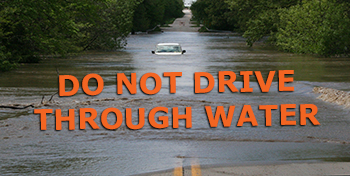The Importance of Flood Prevention
Floods are natural disasters that can cause significant damage to homes, infrastructure, and the environment. While it may not be possible to completely eliminate the risk of flooding, there are proactive measures that individuals and communities can take to prevent or minimize the impact of floods.
Key Strategies for Flood Prevention
Proper Land Use Planning: Ensuring that land development takes into account floodplains and natural drainage patterns can help reduce the risk of flooding in urban and rural areas.
Construction of Flood Barriers: Building levees, dams, and other structures can help protect communities from floodwaters by diverting or containing them.
Vegetation Preservation: Trees and vegetation play a crucial role in absorbing excess water and stabilizing soil, reducing the likelihood of flash floods.
Maintaining Drainage Systems: Regular maintenance of storm drains, culverts, and gutters is essential to ensure proper water flow and prevent blockages during heavy rainfall.
The Benefits of Flood Prevention
By investing in flood prevention measures, communities can experience several benefits:
- Reduced Property Damage: Preventing floods helps protect homes, businesses, and public infrastructure from costly damage.
- Lives Saved: Effective flood prevention measures can significantly reduce the risk to human life during extreme weather events.
- Economic Stability: Minimizing flood damage can help maintain economic stability by preserving property values and business operations.
- Sustainable Development: Implementing flood prevention strategies promotes sustainable development practices that consider environmental impacts.
In Conclusion
Flood prevention is a critical aspect of disaster preparedness that requires collaboration between individuals, communities, governments, and organizations. By taking proactive steps to mitigate flood risks through proper planning, infrastructure investment, and environmental conservation, we can build more resilient communities that are better equipped to withstand natural disasters.
Top 5 Essential Tips for Effective Flood Prevention at Home
- Ensure proper drainage around your property to prevent water buildup.
- Install a sump pump in your basement to remove excess water during floods.
- Elevate electrical outlets, switches, and appliances above potential flood levels.
- Seal cracks in walls and foundations to prevent water seepage during heavy rains.
- Create an emergency plan with evacuation routes and important contacts in case of flooding.
Ensure proper drainage around your property to prevent water buildup.
Ensuring proper drainage around your property is a crucial tip for flood prevention. By maintaining clear pathways for water to flow away from your home, you can prevent water buildup that may lead to flooding during heavy rainfall or storms. Implementing effective drainage systems, such as gutters, downspouts, and grading the land away from the foundation, helps divert excess water and protect your property from potential water damage. Regularly inspecting and maintaining these drainage features can significantly reduce the risk of flooding and safeguard your home against water-related issues.
Install a sump pump in your basement to remove excess water during floods.
Installing a sump pump in your basement is a crucial step in flood prevention. This device helps to efficiently remove excess water that can accumulate during floods, reducing the risk of water damage to your home’s foundation and belongings. By proactively installing a sump pump, you can significantly mitigate the impact of flooding and protect your property from potential costly repairs and restoration efforts.
Elevate electrical outlets, switches, and appliances above potential flood levels.
To enhance flood prevention measures, it is advisable to elevate electrical outlets, switches, and appliances above potential flood levels. By raising these electrical components above the expected water levels, you can reduce the risk of electrical hazards and damage during a flood event. This simple yet effective step can help safeguard your home or business from costly repairs and ensure the safety of occupants in case of flooding.
Seal cracks in walls and foundations to prevent water seepage during heavy rains.
To prevent water seepage during heavy rains, it is essential to seal cracks in walls and foundations effectively. By addressing these vulnerabilities, you can significantly reduce the risk of water infiltration into your property. Sealing cracks helps maintain the structural integrity of buildings and prevents potential water damage that can result from flooding. Taking proactive measures to fortify your walls and foundations is a key step in flood prevention efforts, ensuring a more secure and resilient living environment during extreme weather events.
Create an emergency plan with evacuation routes and important contacts in case of flooding.
Creating an emergency plan that includes evacuation routes and important contacts is a crucial step in flood prevention. By outlining clear procedures for evacuation and ensuring that key contacts are readily accessible, individuals and communities can effectively respond to flood threats and minimize risks to life and property. Having a well-prepared emergency plan in place can help streamline emergency response efforts and ensure that everyone knows what to do in the event of flooding, ultimately enhancing overall safety and resilience.




